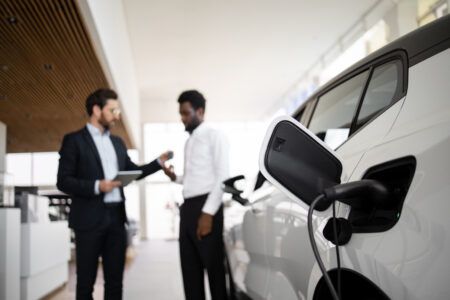With the recent publication of the Road to Zero Strategy by the UK government, it’s great to see that we are setting buildings at the centerpiece of our EV charging strategy. The vast majority of charging of our vehicles will be where we work, rest and play, not at the traditional fuel station. Not only will this have a major effect on the UK’s power generation and infrastructure but it raises the question of how we will design buildings in the future to ensure they can cope with these growing demands. The built environment and construction industry has not really got to grips with this challenge yet. Hopefully this publication gets us started down the road of discussing the wider implications of EV charging on buildings.
It’s also encouraging that the government is finally acknowledging that they “expect that as EVs go mainstream, charging at home overnight, or at workplaces, will continue to be the most attractive options.” They also “anticipate that the vast majority of drivers will choose to charge at home where this is possible.”
There are several practical issues to be overcome, such as the domestic electrical supply size and transformer loading, that are easier to design in from the start in new buildings. However, as the strategy is focused only on new buildings, we believe it needs to go further to tackle existing buildings, as this is where load growth and infrastructure problems could occur if not managed properly. On a practical level, can you plug in two battery electric vehicles into our existing mains electrical supply and cook your Christmas dinner without blowing your main fuse or overloading the domestic network transformer? In most instances, you can’t.
The government recognizes that “the move to EVs will increase demand for electricity. Additional generation capacity will be needed”. They also state that “some areas need to be reinforced to transmit power to where it is needed”. But they believe it will happen over a longer time. We believe this is contradicted by the fact that they predict that 60% of all vehicles sold by 2030 will have some form of plug connection. This could mean infrastructure upgrades will be needed faster.
Furthermore, as we add charging infrastructure to our houses, building regulations and energy charging structures will need updating too. If everyone charges their cars in the evenings after a day at work, the grid won’t cope, and regulations are needed to avoid this issue. Electrical tariffs like Economy 7 could be updated and incentivized to ensure that we charge our cars as smartly as possible over night or when load is low on the UK infrastructure.
Buildings with smart charging installed and potential battery storage could play a big role in reducing the impact on both the UK generating system and power network. If poorly considered building charging networks are instead designed by the building services engineers, the effects on UK infrastructure will be greater. More design advice and guidance is needed for building services engineers to design appropriately and help achieve the aims of a zero-emission vehicle future by 2050.
If you look at the growth in the number of charging points in the UK over the past five years, fast and super-rapid chargers have been the highest number by far. This could be because no practical advice exists and people think the larger the charging point the better. If this trend continues, the pressures on the generating capacity and network will come sooner.
There are a number of opportunities outlined within the government strategy that could provide innovative solutions to benefit the UK electrical infrastructure. For example, EVs will introduce a huge mobile electrical storage system. If connected to building electrical networks, at times of peak power they could alleviate pressure on the grid by supplying power back to the building. Additionally, as battery performance reduces over an eight-year period, it is possible that the car battery could be recycled into building battery storage systems.
However, wireless charging is not really a viable solution long-term as there are inefficiencies in the energy transfer that would need to be overcome, as these losses would result in higher peak load.
It is positive that to sit along the ‘work, rest and play’ charging infrastructure within buildings, they want to build “a world-class network of public charge points”. These are more suited to fast and super-rapid chargers. This network is required to support high mileage drivers and people that are not fortunate enough to have access to charging points at home or work.
On-street parking is a worldwide problem and if we can help solve it through a number of different solutions in the UK, hopefully we can show others around the world how it’s done.
Adam Selvey is a director and design excellence leader for building services at engineering and environmental design consultancy, Ramboll





